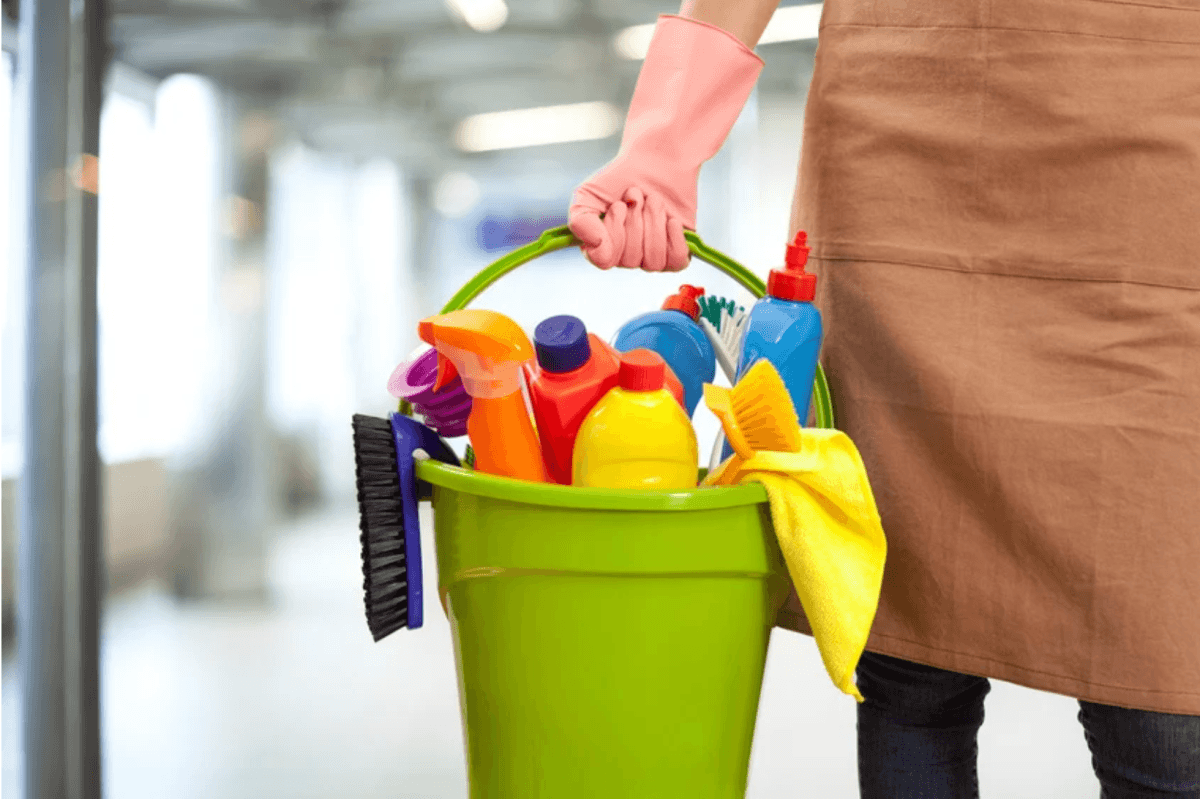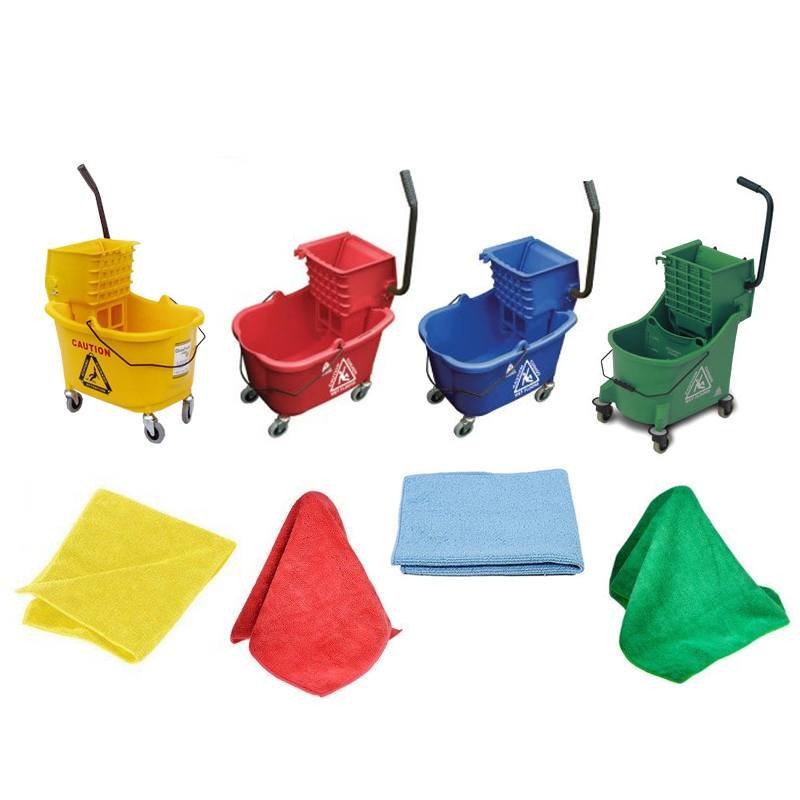
Colour Code Your Cleaning Products! & Other Tips & Tricks for Safe Cleaning and Good Hygiene
With an illiteracy rate of 34 % in India, it is common to find cleaners and janitors who are uneducated and perform cleaning without possessing much knowledge about product-use and safety.
The consequence of this could be dire, such as chemical toxicity, or incurring additional costs for your business from damage of surfaces from using the wrong cleaning products and methods, including undiluted chemicals.
Labelling of the cleaning products can help prevent this, ensuring that your cleaners can easily differentiate between products, understand product use and safety precautions needed.
Here’s how you can label your cleaning products and equipment to help solve this problem.
Colour-coding to Differentiate Areas of Use
Using attractive colours to segregate the equipment required for cleaning different areas can help prevent cross-contamination and improve customer safety. Using different coloured cloths for cleaning toilets and food tables, will reduce the likelihood of the germs being transferred from the restroom to the kitchen.
Colour-coding is a simple but an important step that will help to improve hygiene standards.
Which Colours Should You Use?
Choose colours like red, yellow, blue and green for your cleaning equipment which are already readily available in the market.
-
Red coloured equipment can be used for urinals and toilets which are high risk areas.
-
Yellow can be assigned for low-risk areas like restroom mirrors and sinks.
-
For cleaning surfaces in the kitchen and other food-service areas, green colour can be used.
-
Blue coloured equipment can be assigned for other cleaning activities like dusting and window cleaning.
Depending on your cleaning needs, you can adapt and devise a colour scheme accordingly.
Which Cleaning Products and Equipment Need Colour-Coding?
All common cleaning products that are used across different areas like restrooms, kitchens and lobbies should follow a colour-coding system.
-
Mops, rags and microfiber cloths
-
Buckets and other hand tools
-
Brushes used for scrubbing and dust pans
-
Spray bottles and hand vacuums
-
All-purpose, surface cleaners, disinfectants, bleach, etc.
Once certain colours have been designated to particular areas, they should be adhered to all times by your cleaning staff. Colour-coding your household cleaning products and tools is just the first step to improving your cleaning operations, your cleaning staff would still require proper training to clean at their best.
Let Unilever Professional Standard of Cleaning Program help you achieve that. Sign up today!
Pictograms to Explain Product-Use
Your cleaners may not have the literacy skills to read all the instructions on cleaning product bottles. This makes pictograms a great way to help them follow the correct cleaning instructions easily. Pictograms can make information more easily digestible and straightforward. Instead of using multilingual instructions, pictograms can be a more effective and succinct way to deliver the necessary information to your staff.
Giving Directions of Use
Labelling cleaning products with pictograms that depict product directions of use can help provide important information to supplement product training. For instance, certain disinfectants require the product to be left to sit before removing it to achieve maximum efficiency. You can use pictograms to explain the steps to be followed, including the specific amount of time the product should be left to sit, safety precautions that need to be taken such as using gloves, etc.
Specifying Area of Use
Using these easy ways to communicate important information to your cleaners can improve efficiencies in your cleaning operations and reduce risk of workplace accidents.
To help better equip your cleaners and housekeepers with the knowledge and skills to deliver a high standard of cleaning, Unilever Professional provides cleaning staff and businesses with an industry Standard of Cleaning Program to educate cleaners on the best cleaning practices and optimize your commercial cleaning operations




